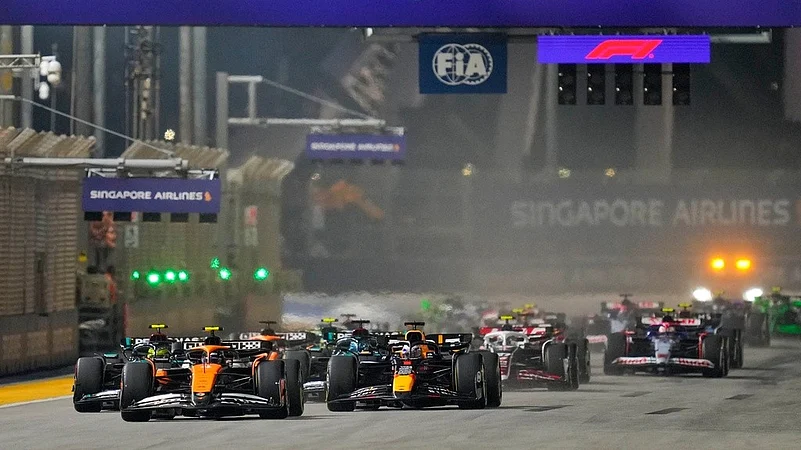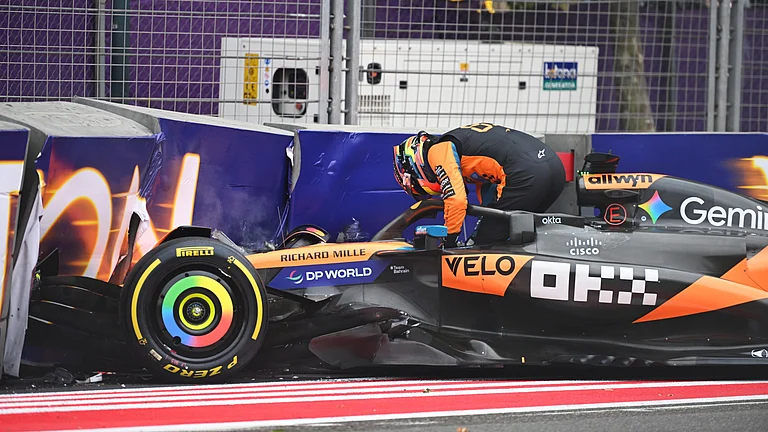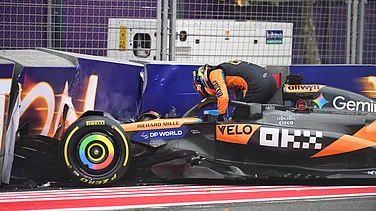
'Heat hazard' cooling rule to apply for first time in F1
Drivers don't have to use cooling system but can't save weight by leaving it out
Singapore GP a notoriously tough race for drivers because of heat, humidity
This week's Singapore Grand Prix has officially been declared a “heat hazard,” meaning cars must carry cooling equipment. It's the first time the rule has been used in Formula 1.
Race director Rui Marques declared a heat hazard on Thursday because the temperature is forecast to be above 31 degrees (88 F) during the race weekend. The temperature in the F1 website forecast for Saturday is 32 C, rising to 33 C on Sunday.
Under new rules for 2025, governing body the FIA introduced cooling vests for drivers which pump fluid around a network of tubes in the vest.
“It’s good, and when you’re racing in 90% humidity and cockpits are getting on for 60 degrees (Celsius), it’s a bit of a sauna inside the car,” said Mercedes driver George Russell, who’s used the system voluntarily at other F1 events.
Russell said the vest can be uncomfortable when a high-speed corner pushes the tubes against his ribs. He admitted he's still “not 100%” after illness at the last race in Azerbaijan, too.
“If it was any other race, I wouldn’t have a single shred of concern,” he said. “Singapore being Singapore and the obvious challenges here, I’m sure it will be fine, but Sunday won’t be a breeze.”
Drivers don't have to use the system but can't save weight by leaving it out.
Even drivers who don't wear the vest must have some cooling system equipment fitted in the car, along with ballast to compensate for the weight of the vest.
Ferrari's Charles Leclerc said he hadn't decided whether to use the vest, arguing conditions would be similar to last year's Singapore race, and therefore “doable.”
The vest is “something we’ll consider and keep in our mind throughout free practice in case it’s way too warm,” he said.
The FIA started work on cooling technology for drivers after the Qatar Grand Prix in 2023 saw drivers require medical attention after feeling unwell in the heat.
Singapore is a notoriously tough race for F1 drivers because of the heat and humidity on the street circuit, even though the race is held at night. In the past, F1 drivers have said the Singapore heat makes their in-car drinking water supplies uncomfortable to drink, some likening it to hot tea.



























